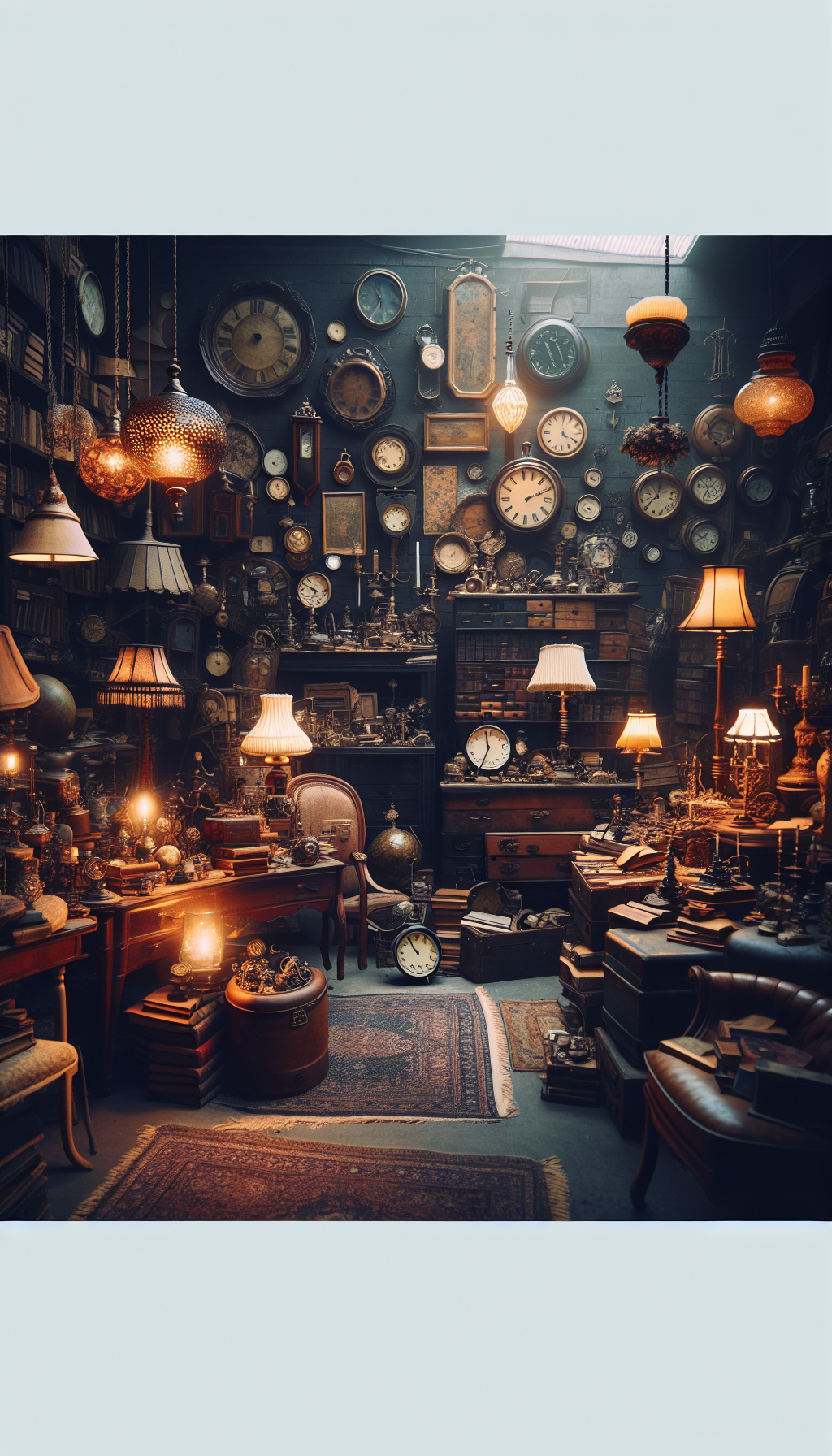Test 5
The best appraisals read like well-argued research papers: clear scope, solid evidence, consistent methodology, and conclusions anchored in real market behavior. Whether you’re cataloging a family heirloom, comparing auction results, or preparing for insurance, this guide walks through the steps professionals follow—value definitions, provenance building, condition reporting, comps, documentation, and standards—so your opinions hold up to scrutiny.
Start with the purpose: which “value” do you need?
Different questions demand different value definitions. Clarify these at the outset—before you gather comps—because the intended use drives the appropriate market and approach.
- Fair Market Value (FMV): The price a willing buyer and seller agree upon, neither under compulsion, both informed, in the most relevant market. Common for charitable donations and estate tax reporting in the U.S.
- Retail Replacement Value (RRV): The cost to replace an item with another of like kind and quality in the retail market within a reasonable time. Used for insurance. RRV is often higher than recent auction prices because it reflects dealer overhead and the cost of locating a comparable item quickly.
- Orderly Liquidation Value (OLV) and Forced Liquidation Value (FLV): Used in business contexts where assets must be sold under time constraints, often below FMV.
- Marketable Cash Value (MCV): Sometimes used to reflect a seller’s net proceeds after commissions and costs.
- Trade/Wholesale Value: What a dealer would likely pay, often substantially below retail to account for risk, holding costs, and needed restoration.
Define additional scoping elements:
- Effective date of value: The market changes; choose a specific date.
- Relevant market level: Primary (galleries/dealers) vs. secondary (auctions/private sales).
- Intended users: Who will rely on the report (you, an insurer, a court)?
- Assumptions and limiting conditions: For example, assuming authenticity unless stated otherwise, or noting that no scientific testing was performed.
Spending five minutes to define these rules prevents hours of rework and ensures your comps and adjustments are fit for purpose.
Provenance and authenticity: building the evidence
Provenance is the documented history of ownership, exhibition, and publication. Authenticity is the conclusion that the object is what it purports to be. They are related but distinct. Assemble your evidence in layers:
- Paper trail: Bills of sale, gallery invoices, insurance schedules, loan agreements, exhibition catalogs, conservation invoices, letters, and estate inventories. Label photos and shipping tags on the work’s reverse often reveal exhibition history.
- Maker’s marks and signatures: Hallmarks, assay marks, foundry stamps, edition numbers, potter’s marks, cabinetmaker labels, watch reference and serial numbers. Decode marks using reputable references; record their exact placement and format.
- Construction and materials: Joinery (hand-cut dovetails vs machine), saw/tool marks, screw threads and slot types, stretcher construction, canvas weave, ground layers, paper watermarks, glaze and paste on ceramics, enamel techniques on watches. These often date an object within decades.
- Comparative literature: Catalogues raisonnés for major artists, factory pattern books, period trade catalogs, and scholarship on regional schools or makers. Note when your piece is illustrated—or conspicuously absent—relative to its claimed history.
- Technical examination (when warranted): UV illumination for overpaint or fluorescence, raking light for surface deformations, infrared reflectography for underdrawing in paintings, X-radiography for structural issues, pigment/binder analysis, wood species identification, thermoluminescence (TL) dating on some ceramics. Record methods, findings, and who conducted them.
Watch for red flags:
- Provenance gaps that conveniently cover problematic periods.
- Signatures inconsistent in pressure, placement, or line quality relative to known examples.
- Artificial aging: Uniform “wear,” chemically induced patination, fresh tool marks under grime.
- Incongruent materials: Modern screws in “18th-century” furniture without documented restoration.
Finally, consider legal and ethical constraints. Some categories are governed by cultural property laws or wildlife regulations (e.g., ivory, tortoiseshell). Export/import restrictions and restitution concerns can materially affect value and marketability. Document your due diligence.
Condition, restoration, and value impact
Condition is rarely binary; it’s a spectrum with direct, category-specific impact on value. A usable framework is to separate: 1) the presence of issues, 2) their stability, and 3) their visibility.
Structure your condition report to be descriptive, not speculative:
- Identify the object and the scope of inspection (in-person vs from photographs).
- Survey systematically: front, back, sides, under raking and normal light.
- Note materials, construction, dimensions, and weight where relevant.
- Record observed issues and prior restorations precisely: location, extent, and severity.
- Distinguish original features from later additions or repairs.
- Comment on stability (active flaking vs stable craquelure).
Media-specific considerations:
- Paintings: Craquelure type and distribution, cupping, lifting, tenting, stretcher bar marks, relining, patching, fill and inpainting under UV, varnish condition (yellowed, matte/gloss variations). Minor edge retouch may have modest impact; extensive overpaint or aggressive cleaning can depress value significantly, especially for modern masters.
- Works on paper: Foxing, mat burn, light staining, tide lines, chalk/pastel friability, plate marks, sheet size and margins, hinging/taping, laid vs wove paper, watermarks. Trimmed margins on prints can reduce value dramatically for certain artists.
- Furniture: Warping, shrinkage cracks, veneer lifting, replaced feet or tops, drawer runners, original vs replaced hardware, surface (original finish can command a premium; refinishing is often value-negative in high-end American or British furniture).
- Ceramics and glass: Hairline cracks, star cracks, chips, rim frits, footrim wear, body translucency, overpaint, staple repairs, regilding. “Museum-quality restoration” may read well but can still halve value in sensitive markets.
- Watches and clocks: Case polishing, dial refinishing, replaced hands, movement swaps (“franken” pieces), service history, water ingress, lume originality. Proven, period-correct components and unpolished cases often command premiums.
Be explicit about how condition intersects with value for the category and period. Early utilitarian wares may tolerate minor chips; a contemporary editioned print with paper losses will not. Stability matters for insurers; visibility matters for retail; both matter at auction.
Comparables and market analysis: from data to opinion
Comps are not just “similar sales.” They are selected, time-adjusted, and normalized data points that mirror your object’s most relevant market.
Selecting comps:
- Match on hierarchy: artist/maker, period, medium, technique, size/scale, subject or model, edition and number, provenance, and condition.
- Choose a consistent market level: auction results for FMV; retail offerings or private sales for RRV when appropriate.
- Use multiple points across time to see trend direction, not a single outlier.
Reading auction data correctly:
- Distinguish hammer price (what the auctioneer calls) from price realized (hammer plus buyer’s premium). Track premium structures for the sale date; they change.
- Note the currency, fees, and taxes to normalize across sales.
- Identify reserve behavior: “bought-in” or “passed” lots signal market resistance at the estimate level.
- Recognize private treaty sales and post-sale transactions may not be fully transparent.
Making adjustments:
- Time: Apply a market trend factor if the category has materially moved since the comp’s date. Use index data if available or construct a micro-index from a basket of similar sales.
- Condition: Adjust downward for losses, extensive restoration, or instability; upward for exceptional original condition or untouched surfaces.
- Size and scale: Particularly for sculpture or design; logarithmic or category-specific relationships often fit better than linear per-inch.
- Subject and rarity: Desirable subjects, colorways, or models within an artist’s oeuvre can justify premiums; common subjects may trade at a discount.
- Edition dynamics: Edition size, number, printer/publisher, and state matter for prints and multiples.
Common pitfalls:
- Relying on dealer asking prices rather than achieved prices.
- Using record-breaking sales as baselines without context (fresh-to-market provenance, pristine condition, marketing effect).
- Ignoring transaction costs: Sellers’ commissions and expenses reduce net proceeds; retail includes overhead and guarantees.
- Overfitting: Too many adjustments make the opinion look engineered. Favor fewer, well-justified comps.
Summarize your analysis: state the range supported by comps, your primary point within the range, and why. Transparency strengthens credibility.
Documentation and photography that appraisers rely on
Good documentation accelerates research and reduces ambiguity. Treat your object like a case file.
Measurements and data:
- Record dimensions in consistent units and indicate framed/unframed measurements for art. Note height x width x depth, and diameter for round forms.
- Weigh heavy or precious-metal items where relevant; retain scale calibration documentation for precision claims.
- Capture inscriptions, edition numbers, foundry marks, serial numbers, and any labels verbatim, with line breaks and punctuation.
Photography basics:
- Take images in diffuse daylight or color-balanced lighting. Include full-front, reverse, and all sides; add raking light to reveal texture or repairs.
- Shoot close-ups of signatures, marks, labels, damages, and construction details (joints, dovetails, screw heads).
- Include a size reference and neutral color target for consistency across sessions.
- Avoid filters and aggressive post-processing; correct only for exposure and white balance.
File management:
- Use descriptive filenames with a consistent pattern: maker_title_year_dims_view_001.jpg.
- Store raw files and edits; embed basic metadata (creator, date, location).
- Assign an object ID and maintain a catalog record with fields for identification, materials, dimensions, condition, provenance, literature/exhibitions, comps, and valuation rationale.
Document storage:
- Keep paper ephemera in acid-free sleeves; never affix labels directly to objects.
- Photograph fragile documents and store originals separately from the object.
Reports, standards, and working with professionals
A defensible appraisal report is more than a number. It sets out scope, methodology, data, and reasoning in a way a third party can understand and replicate.
Core components:
- Object identification and high-quality images.
- Intended use, intended users, value definition, effective date, and market level.
- Scope of work and assumptions/limiting conditions.
- Summary of research, provenance, and condition.
- Comparable sales and analysis with specific adjustments or rationale.
- Valuation approach and reconciliation to a final opinion (or range).
- Certification statement and appraiser’s qualifications.
Standards:
- In the U.S., appraisers typically follow USPAP (Uniform Standards of Professional Appraisal Practice). Internationally, IVS (International Valuation Standards) may apply. These frameworks emphasize competency, independence, and transparent reporting.
- Report types vary: a Restricted Appraisal Report is for limited, named users and contains summarized content; a fuller Appraisal Report includes more detail for broader reliance.
Engaging a professional:
- Hire when stakes are high: insurance scheduling, charitable donation, estate/tax reporting, or when authenticity is in question.
- Expect fee structures based on time or project scope; contingency fees based on value are considered unethical for appraisal work.
- Provide access to the object, all documents, prior appraisals, and any restoration records. Ask about the appraiser’s category expertise and professional affiliations.
Revisit valuations periodically. Markets move, and condition changes. Insurance schedules often benefit from a 3–5 year review; volatile categories may warrant more frequent updates.
Practical checklist: pre-appraisal and documentation
- Define the appraisal’s intended use, value definition, and effective date.
- Identify the relevant market level (retail, auction, private sales).
- Assemble provenance: invoices, labels, photos, correspondence, prior appraisals.
- Document maker marks, signatures, serial/edition numbers, and inscriptions verbatim.
- Measure accurately (note framed/unframed) and record materials and construction.
- Photograph systematically: front/back/sides, details, raking light, scale, color target.
- Draft a descriptive condition report; separate observation from interpretation.
- Screen legal/ethical issues (cultural property, wildlife materials, export/import).
- Research comparables; normalize for buyer’s premium, currency, and date.
- Adjust for condition, size, subject/rarity, and time; avoid outlier reliance.
- Record your analysis, assumptions, and reconciliation to a supportable opinion.
- Assign an object ID and store all files and notes in a structured catalog.
FAQ
Q: How do I tell if a signature is genuine? A: Compare the signature’s line quality, pressure, letter formation, and placement with documented examples from the same period. Inspect under magnification for hesitation or retouching. Context matters: provenance, materials, and construction should support the attribution. When in doubt, consult relevant scholarship or technical analysis.
Q: What if my piece lacks provenance? A: Absence of paperwork isn’t fatal, but it increases uncertainty. Build a circumstantial case with materials, construction, marks, and stylistic analysis; look for exhibition labels or inventory marks on the reverse; search period dealer records and auction catalogues. Expect a value discount relative to similar works with strong provenance.
Q: Should I restore before appraisal or sale? A: Not automatically. Minor, reversible conservation that stabilizes an object can preserve value, but aggressive cosmetic restoration can reduce it. Get a condition assessment first and solicit a conservator’s treatment proposal. For high-value works, appraise as-is and let the market decide; some buyers prefer untouched condition.
Q: Why do auction and retail values differ so much? A: They reflect different market functions and cost structures. Auction prices are competitive wholesale indicators with variable momentum; retail prices include vetting, guarantees of authenticity, return policies, and the dealer’s search/holding costs. For insurance, RRV is the relevant benchmark; for tax and estate, FMV (often informed by auction) is typical.
Q: How often should I update an insurance appraisal? A: Every 3–5 years for stable categories; sooner for volatile markets, newly fashionable artists, or when condition changes. High-end watches, contemporary art, and design can move quickly; early American furniture or traditional porcelain may move more slowly. Always note the effective date on schedules.
With clear purpose, rigorous evidence, and disciplined analysis, your appraisal work becomes more than an opinion—it becomes a defensible, repeatable process that protects both value and credibility.



